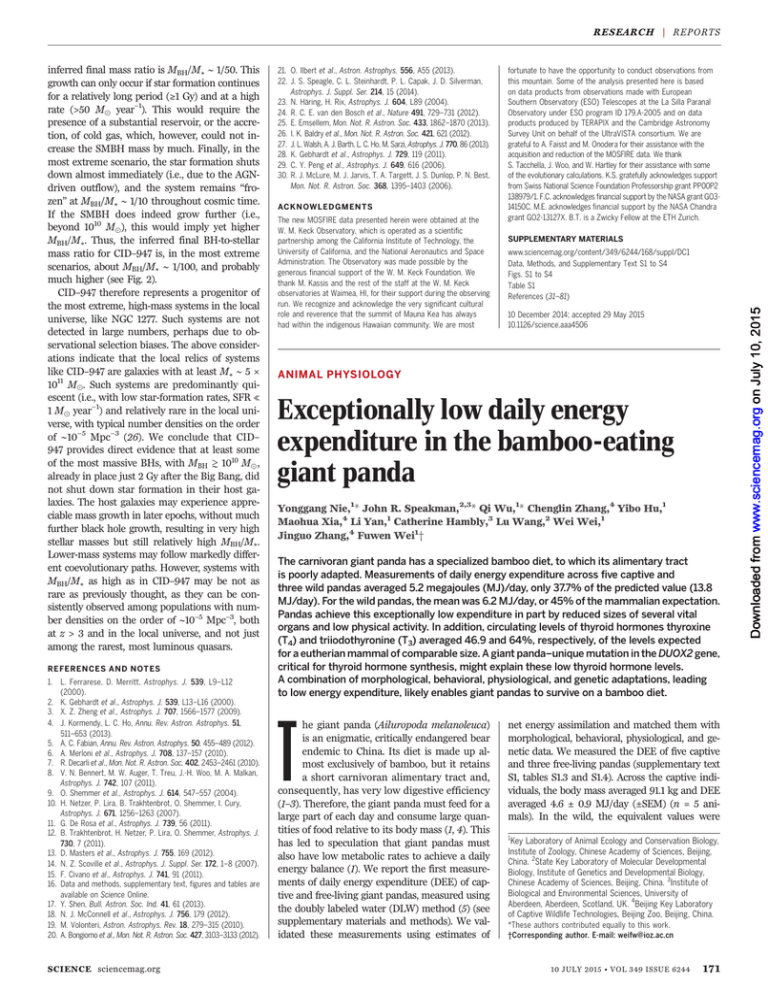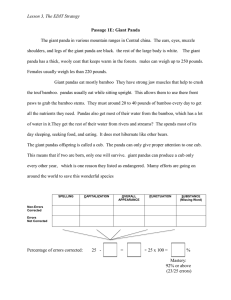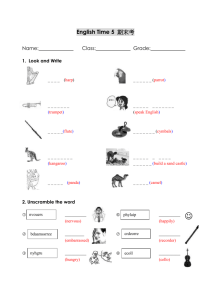
RE S EAR CH | R E P O R T S
RE FE RENCES AND N OT ES
1. L. Ferrarese, D. Merritt, Astrophys. J. 539, L9–L12
(2000).
2. K. Gebhardt et al., Astrophys. J. 539, L13–L16 (2000).
3. X. Z. Zheng et al., Astrophys. J. 707, 1566–1577 (2009).
4. J. Kormendy, L. C. Ho, Annu. Rev. Astron. Astrophys. 51,
511–653 (2013).
5. A. C. Fabian, Annu. Rev. Astron. Astrophys. 50, 455–489 (2012).
6. A. Merloni et al., Astrophys. J. 708, 137–157 (2010).
7. R. Decarli et al., Mon. Not. R. Astron. Soc. 402, 2453–2461 (2010).
8. V. N. Bennert, M. W. Auger, T. Treu, J.-H. Woo, M. A. Malkan,
Astrophys. J. 742, 107 (2011).
9. O. Shemmer et al., Astrophys. J. 614, 547–557 (2004).
10. H. Netzer, P. Lira, B. Trakhtenbrot, O. Shemmer, I. Cury,
Astrophys. J. 671, 1256–1263 (2007).
11. G. De Rosa et al., Astrophys. J. 739, 56 (2011).
12. B. Trakhtenbrot, H. Netzer, P. Lira, O. Shemmer, Astrophys. J.
730, 7 (2011).
13. D. Masters et al., Astrophys. J. 755, 169 (2012).
14. N. Z. Scoville et al., Astrophys. J. Suppl. Ser. 172, 1–8 (2007).
15. F. Civano et al., Astrophys. J. 741, 91 (2011).
16. Data and methods, supplementary text, figures and tables are
available on Science Online.
17. Y. Shen, Bull. Astron. Soc. Ind. 41, 61 (2013).
18. N. J. McConnell et al., Astrophys. J. 756, 179 (2012).
19. M. Volonteri, Astron. Astrophys. Rev. 18, 279–315 (2010).
20. A. Bongiorno et al., Mon. Not. R. Astron. Soc. 427, 3103–3133 (2012).
SCIENCE sciencemag.org
21. O. Ilbert et al., Astron. Astrophys. 556, A55 (2013).
22. J. S. Speagle, C. L. Steinhardt, P. L. Capak, J. D. Silverman,
Astrophys. J. Suppl. Ser. 214, 15 (2014).
23. N. Häring, H. Rix, Astrophys. J. 604, L89 (2004).
24. R. C. E. van den Bosch et al., Nature 491, 729–731 (2012).
25. E. Emsellem, Mon. Not. R. Astron. Soc. 433, 1862–1870 (2013).
26. I. K. Baldry et al., Mon. Not. R. Astron. Soc. 421, 621 (2012).
27. J. L. Walsh, A. J. Barth, L. C. Ho, M. Sarzi, Astrophys. J. 770, 86 (2013).
28. K. Gebhardt et al., Astrophys. J. 729, 119 (2011).
29. C. Y. Peng et al., Astrophys. J. 649, 616 (2006).
30. R. J. McLure, M. J. Jarvis, T. A. Targett, J. S. Dunlop, P. N. Best,
Mon. Not. R. Astron. Soc. 368, 1395–1403 (2006).
ACKN OWLED GMEN TS
The new MOSFIRE data presented herein were obtained at the
W. M. Keck Observatory, which is operated as a scientific
partnership among the California Institute of Technology, the
University of California, and the National Aeronautics and Space
Administration. The Observatory was made possible by the
generous financial support of the W. M. Keck Foundation. We
thank M. Kassis and the rest of the staff at the W. M. Keck
observatories at Waimea, HI, for their support during the observing
run. We recognize and acknowledge the very significant cultural
role and reverence that the summit of Mauna Kea has always
had within the indigenous Hawaiian community. We are most
fortunate to have the opportunity to conduct observations from
this mountain. Some of the analysis presented here is based
on data products from observations made with European
Southern Observatory (ESO) Telescopes at the La Silla Paranal
Observatory under ESO program ID 179.A-2005 and on data
products produced by TERAPIX and the Cambridge Astronomy
Survey Unit on behalf of the UltraVISTA consortium. We are
grateful to A. Faisst and M. Onodera for their assistance with the
acquisition and reduction of the MOSFIRE data. We thank
S. Tacchella, J. Woo, and W. Hartley for their assistance with some
of the evolutionary calculations. K.S. gratefully acknowledges support
from Swiss National Science Foundation Professorship grant PP00P2
138979/1. F.C. acknowledges financial support by the NASA grant GO314150C. M.E. acknowledges financial support by the NASA Chandra
grant GO2-13127X. B.T. is a Zwicky Fellow at the ETH Zurich.
SUPPLEMENTARY MATERIALS
www.sciencemag.org/content/349/6244/168/suppl/DC1
Data, Methods, and Supplementary Text S1 to S4
Figs. S1 to S4
Table S1
References (31–81)
10 December 2014; accepted 29 May 2015
10.1126/science.aaa4506
ANIMAL PHYSIOLOGY
Exceptionally low daily energy
expenditure in the bamboo-eating
giant panda
Yonggang Nie,1* John R. Speakman,2,3* Qi Wu,1* Chenglin Zhang,4 Yibo Hu,1
Maohua Xia,4 Li Yan,1 Catherine Hambly,3 Lu Wang,2 Wei Wei,1
Jinguo Zhang,4 Fuwen Wei1†
The carnivoran giant panda has a specialized bamboo diet, to which its alimentary tract
is poorly adapted. Measurements of daily energy expenditure across five captive and
three wild pandas averaged 5.2 megajoules (MJ)/day, only 37.7% of the predicted value (13.8
MJ/day). For the wild pandas, the mean was 6.2 MJ/day, or 45% of the mammalian expectation.
Pandas achieve this exceptionally low expenditure in part by reduced sizes of several vital
organs and low physical activity. In addition, circulating levels of thyroid hormones thyroxine
(T4) and triiodothyronine (T3) averaged 46.9 and 64%, respectively, of the levels expected
for a eutherian mammal of comparable size. A giant panda–unique mutation in the DUOX2 gene,
critical for thyroid hormone synthesis, might explain these low thyroid hormone levels.
A combination of morphological, behavioral, physiological, and genetic adaptations, leading
to low energy expenditure, likely enables giant pandas to survive on a bamboo diet.
T
he giant panda (Ailuropoda melanoleuca)
is an enigmatic, critically endangered bear
endemic to China. Its diet is made up almost exclusively of bamboo, but it retains
a short carnivoran alimentary tract and,
consequently, has very low digestive efficiency
(1–3). Therefore, the giant panda must feed for a
large part of each day and consume large quantities of food relative to its body mass (1, 4). This
has led to speculation that giant pandas must
also have low metabolic rates to achieve a daily
energy balance (1). We report the first measurements of daily energy expenditure (DEE) of captive and free-living giant pandas, measured using
the doubly labeled water (DLW) method (5) (see
supplementary materials and methods). We validated these measurements using estimates of
net energy assimilation and matched them with
morphological, behavioral, physiological, and genetic data. We measured the DEE of five captive
and three free-living pandas (supplementary text
S1, tables S1.3 and S1.4). Across the captive individuals, the body mass averaged 91.1 kg and DEE
averaged 4.6 ± 0.9 MJ/day (±SEM) (n = 5 animals). In the wild, the equivalent values were
1
Key Laboratory of Animal Ecology and Conservation Biology,
Institute of Zoology, Chinese Academy of Sciences, Beijing,
China. 2State Key Laboratory of Molecular Developmental
Biology, Institute of Genetics and Developmental Biology,
Chinese Academy of Sciences, Beijing, China. 3Institute of
Biological and Environmental Sciences, University of
Aberdeen, Aberdeen, Scotland, UK. 4Beijing Key Laboratory
of Captive Wildlife Technologies, Beijing Zoo, Beijing, China.
*These authors contributed equally to this work.
†Corresponding author. E-mail: weifw@ioz.ac.cn
10 JULY 2015 • VOL 349 ISSUE 6244
17 1
Downloaded from www.sciencemag.org on July 10, 2015
inferred final mass ratio is MBH/M∗ ∼ 1/50. This
growth can only occur if star formation continues
for a relatively long period (≥1 Gy) and at a high
rate (>50 M⊙ year−1). This would require the
presence of a substantial reservoir, or the accretion, of cold gas, which, however, could not increase the SMBH mass by much. Finally, in the
most extreme scenario, the star formation shuts
down almost immediately (i.e., due to the AGNdriven outflow), and the system remains “frozen” at MBH/M∗ ∼ 1/10 throughout cosmic time.
If the SMBH does indeed grow further (i.e.,
beyond 1010 M⊙), this would imply yet higher
MBH/M∗. Thus, the inferred final BH-to-stellar
mass ratio for CID–947 is, in the most extreme
scenarios, about MBH/M∗ ∼ 1/100, and probably
much higher (see Fig. 2).
CID–947 therefore represents a progenitor of
the most extreme, high-mass systems in the local
universe, like NGC 1277. Such systems are not
detected in large numbers, perhaps due to observational selection biases. The above considerations indicate that the local relics of systems
like CID–947 are galaxies with at least M∗ ∼ 5 ×
1011 M⊙. Such systems are predominantly quiescent (i.e., with low star-formation rates, SFR ≪
1 M⊙ year−1) and relatively rare in the local universe, with typical number densities on the order
of ∼10−5 Mpc−3 (26). We conclude that CID–
947 provides direct evidence that at least some
of the most massive BHs, with MBH ≳ 1010 M⊙ ,
already in place just 2 Gy after the Big Bang, did
not shut down star formation in their host galaxies. The host galaxies may experience appreciable mass growth in later epochs, without much
further black hole growth, resulting in very high
stellar masses but still relatively high MBH/M∗.
Lower-mass systems may follow markedly different coevolutionary paths. However, systems with
MBH/M∗ as high as in CID–947 may be not as
rare as previously thought, as they can be consistently observed among populations with number densities on the order of ∼10−5 Mpc−3, both
at z > 3 and in the local universe, and not just
among the rarest, most luminous quasars.
R ES E A RC H | R E PO R TS
92.6 kg and 6.2 ± 1.5 MJ/day (n = 3 animals).
There was a significant effect of body mass on
DEE (regression P < 0.001; coefficient of determination r2 = 83.8%) but no significant difference
between captive and wild animals (P = 0.081)
(Fig. 1A). The pooled estimate was 5.2 ± 0.7 MJ/day
(n = 8 animals). We validated these estimates by
comparing the DEE by DLW to the net energy
assimilation (NEA) estimated from individual
measures of assimilation efficiency, multiplied by
the daily fecal production, measured in three captive pandas almost daily for 11 months (n = 961
animal days). Assimilation efficiency varied between
11.1 and 20.5% (supplementary text S2), comparable
to previous estimates in captive pandas (7.4 to
38.9%) (2, 6, 7). Daily NEA (megajoules per day)
varied over the year, being higher in the winter
months (Fig. 1B). Consequently, there was a significant negative relationship between NEA and the
average daily shade temperature (Fig. 1C) [regression: F1,37 = 197.9, P < 0.001]. Across all measurements, the average NEA was 7.0 ± 2.1 MJ/day
(±SD). A prior estimate of NEA for giant pandas
in captivity was 4.2 MJ/day (7), slightly lower than
our measured value, probably because it was made
at a higher ambient temperature. Excepting a single value, the DEE data were within the standard
deviations of the NEA data. We used the fitted
equation between NEA and ambient temperature
to predict the expected NEA on the days the DLW
method was used. The measured DEE averaged
77.0 ± 7.3% (±SD) of the predicted NEA (absolute
mean discrepancy 1.6 ± 0.49 MJ/day). This
discrepancy exists because NEA values do not
account for energy in urine, which is high because
of the role of panda urine in scent marking (8).
Combining the water turnover from the DLW
estimates with the water loss in feces indicated
that pandas may produce maximally 5.0 liters of
urine daily (supplementary text S2). Linking
this estimate with direct measurements of urine
solid matter and energy content suggests that
pandas may maximally eliminate 2.1 MJ/day in
urine, not significantly different from the mean
discrepancy between the NEA and DEE estimates (t test: t = 2.02, P = 0.136).
The DEE by DLW was only 37.7% of the expectation (45% for the field data) for a terrestrial
mammal on the basis of body mass (Fig. 1D) (9).
These values are substantially lower than those
for other mammals considered to have low DEE,
such as the koala (Phascolarctos cinerus) at 69%
and the echidna (Tachyglossus aculeatus) at 66%
of the expected value. Additionally, for the pooled
DLW estimate, our values were almost equal to
that of the three-toed sloth (Bradypus variegatus)
Fig. 1. Daily energy demands of the giant panda. (A) Daily energy expenditure (DEE) (megajoules per day) using the DLW method for eight pandas in
relation to body mass (kilograms). Captive animals (n = 5) are represented by
red circles and wild animals (n = 3) by black triangles. (B) Net energy assimilation (NEA) (megajoules per day) averaged across three captive pandas
estimated from assimilation efficiency and daily fecal production and plotted
against day of year (1 January = 1). Air temperatures (red squares) are also
shown (mean ± SD). (C) NEA (megajoules per day) plotted against ambient
temperature (blue triangles with SD) and DEE (megajoules per day) of five
172
10 JULY 2015 • VOL 349 ISSUE 6244
at 36% of the prediction. The lowest reported primate DEE is for the ring-tailed lemur (Lemur catta)
at 52% of expected (10). Only two other mammals have relative DEE values that are considerably lower than those of the giant panda: the
Australian rock rat (Zyzomys argurus) (21% of
the predicted level) (11) and the desert golden
mole (Eremitalpa namibensis) (26% of expected)
(12). However, it is unclear whether these small
animals were using torpor during the measurements. Otherwise, the measurements for the giant
panda are among the lowest, relative to body mass,
ever made for a nontorpid mammal. In fact, DEE
in the giant panda (and sloth) is closer to the
expectations for a 92-kg reptile (4.9 MJ/day) (13)
than for a terrestrial mammal.
Animals may achieve low rates of metabolism
via behavioral, morphological, and physiological
adaptations. Low metabolic rates may be achieved
by relaxing homeothermy (14). However, giant
panda body temperatures indicate that they do
not engage in either daily torpor or hibernation
(15). Presumably, giant pandas can sustain a high
body temperature, despite their low DEE, because
they have a deep pelage able to trap their meager
body heat (1). Supporting this hypothesis, measurements of lateral surface temperatures of giant
pandas are significantly lower than those of
captive individuals by DLW (red circles). (D) DEE by DLW of terrestrial mammals [loge field metabolic rate (FMR) (kilojoules per day)] plotted against
body mass [loge mass (grams)]. Each point represents a different species
[data from (9) and (10)]. The solid line is the equation loge (FMR in kilojoules
per day) = 1.871 + 0.67[loge mass (grams)] [from (9)]. The giant panda is
represented by the red data point. The dotted line is equal to 37% of the
prediction equation. Some other animals with low metabolism are
indicated. Bv, B. variegatus (three-toed sloth); En, E. namibensis (desert golden mole); Za, Z. argurus (Australian rock rat).
sciencemag.org SCIENCE
RE S EAR CH | R E P O R T S
zebras (Equus quagga), dairy cattle (Bos taurus),
and domestic dogs (Canis familiaris) (Fig. 2).
Animals may also reduce DEE by minimizing
the time spent in and intensity of physical activity. We measured the activity of captive pandas
by direct observation and in the wild using GPS
loggers and direct observation. In captivity, the
animals spent 33% of their time being physically
active; in the wild, 49% of their time was devoted
to physical activity. These findings are similar to
those reported previously (16). Pandas in the wild
were more active than those in captivity (t test: t =
–3.93, P = 0.017) (Fig. 3A). Compared with other
bears, pandas had lower levels of activity (1, 17).
In the wild, both the foraging movement
speed (15.5 m/hour) and the mean movement
speed (26.9 m/hour) were very low (Fig. 3B).
For larger terrestrial mammals, the dominant component of the daily energy budget is
the resting metabolic rate (9). Resting metabolism is derived from the summed metabolic
Fig. 2. Surface temperatures of giant pandas, zebras,
Holstein cows, and Dalmatian dogs at ambient air temperatures of ~4°C (blue boxes) and 10°C (brown boxes).
The pictures show representative thermal images (top) and
normal images (bottom). The plot underneath shows the
analysis of lateral surface temperatures. Boxes represent the
range of surface temperatures (minimum to maximum).
Mean values are denoted by the red bars. (See supplementary materials for more details.)
Fig. 3. Physical activity and thyroid
hormone levels. (A) Physical activity
levels in wild and captive pandas
(mean T SD). Asterisks indicate
P < 0.05 (t test). (B) Movement speed
when foraging and mean movement
speed (mean T SD) over the whole year
in wild pandas. Thyroid hormone levels
for (C) T4 and (D) T3 in eutherian
mammals (blue diamonds) [data from
(28)]. Each data point represents a
different species. The fitted curves
show the best-fit polynomial relationships with the associated equations in
the respective panels. The giant panda
is represented by the red data points.
SCIENCE sciencemag.org
10 JULY 2015 • VOL 349 ISSUE 6244
173
R ES E A RC H | R E PO R TS
rates of the body components (18). Some organs
such as the liver, brain, kidneys, and heart contribute disproportionally to the total (19). We
used literature autopsy data to assess whether
pandas have relatively small organ sizes (supplementary text S3, table S3). Giant pandas have
relatively small brains, livers, and kidneys (respectively, 82.5, 62.8, and 74.5% of expectation)
compared with other eutherian mammals. These
reduced organ sizes probably contribute to their
low energy demands. Resting metabolic rate is
also strongly influenced by several hormones,
particularly the thyroid hormones (20) thyroxine (T4) and triiodothyrioine (T3). In the same
captive animals in which we measured DEE,
total T4 averaged 24.44 ± 1.17 nM (±SEM), and
total T3 averaged 0.94 ± 0.05 nM, similar to previous giant panda measurements (21). The T4
level was 46.9%, and T3 64.0%, of the expectation for a eutherian mammal of the same body
mass (Fig. 3, C and D). These measurements were
lower than in hibernating black bears (Ursus
americanus) (22). In Fig. 3D, the data point
lower than that for the panda is representative
of the gray seal (Halichoerus grypus); gray seals
are believed to have low T3 levels to facilitate metabolic suppression during diving. Pandas clearly
have low levels of both T4 and T3, which may be
instrumental in their exceptionally low metabolism.
We compared the panda genome with the genomes of five other carnivorans, mouse, and human. We did not find any notable mutations in
the promoter regions and exons or introns of
the 182 genes listed in the Kyoto Encyclopedia
of Genes and Genomes as linked to the thyroid
hormone synthesis and thyroid signaling pathways, with one exception. A unique variation was
found in the dual oxidase 2 (DUOX2) gene in the
panda, which is homologous to the DUOX2 gene
in humans. DUOX2 encodes a transmembrane protein that catalyzes the conversion of water to hydrogen peroxide, which is used in the final step
of T4 and T3 synthesis. The giant panda DUOX2
gene contains a single substitution of C to T in the
16th exon, which causes a premature stop codon
(TGA) (Fig. 4). This mutation is also observed
in transcriptome data, suggesting that the transcript of DUOX2 would not be translated into
a complete protein. In humans and mice, lossof-function mutations in DUOX2 lead to hypothyroidism (23–25).
Although the metabolic rates of the giant panda are exceptionally low, we do not suggest that
they are entirely separate from other eutherian
mammals. Other folivorous animals, like the threetoed sloth, also have very low DEEs, and this is
probably true of several other species, such as the
frugivorous binturong (Arctictis binturong) and
the folivorous red panda (Ailurus fulgens), both
of which have very low basal rates of metabolism
(26). Rather, the giant panda represents one end
of a spectrum of metabolic rates where the dominant ultimate factors may be the quality and quantity of the food they exploit (27).
Giant pandas have exceptionally low DEE,
which may facilitate survival on their diet of
bamboo. A suite of behavioral, morphological,
and physiological factors—including low physical activity levels and reduced sizes of some high
metabolism organs—probably contribute to the
low energy expenditure. Additionally, levels of the
thyroid hormones are about half of the expected
amounts. This may be linked, in part, to mutations in the panda genome in the DUOX2 gene,
which catalyzes a key step in T4 and T3 synthesis.
REFERENCES AND NOTES
1. G. B. Schaller, J. C. Hu, W. S. Pan, J. Zhu, The Giant Panda
of Wolong (Univ. of Chicago Press, Chicago, 1985).
2. E. S. Dierenfeld, H. F. Hintz, J. B. Robertson, P. J. Van Soest,
O. T. Oftedal, J. Nutr. 112, 636–641 (1982).
3. F. Wei et al., Mol. Biol. Evol. 32, 4–12 (2015).
4. W. S. Pan, Z. Lv, X. J. Zhu, D. J. Wang, H. Wang, Y. Long,
D. L. Fu, X. Zhou, A Chance for Lasting Survival, W. J. McShea,
R. B. Harris, D. L. Garshelis, D. J. Wang, Eds. (Smithsonian
Institution Scholarly Press, Washington, DC, 2014).
5. P. J. Butler, J. A. Green, I. L. Boyd, J. R. Speakman, Funct. Ecol.
18, 168–183 (2004).
6. S. A. Mainka, G. Zhao, M. Li, J. Zoo Wildl. Med. 20, 39–44 (1989).
7. T. G. Finley et al., Zoo Biol. 30, 121–133 (2011).
8. Y. G. Nie et al., Anim. Behav. 84, 39–44 (2012).
9. J. R. Speakman, E. Król, J. Anim. Ecol. 79, 726–746 (2010).
10. H. Pontzer et al., Proc. Natl. Acad. Sci. U.S.A. 111, 1433–1437 (2014).
11. S. D. Bradshaw, K. D. Morris, C. R. Dickman, P. C. Withers,
D. Murphy, Aust. J. Zool. 42, 29–41 (1994).
12. M. Scantlebury, M. K. Oosthuizen, J. R. Speakman, C. R. Jackson,
N. C. Bennett, Physiol. Behav. 84, 739–745 (2005).
13. K. A. Nagy, I. A. Girard, T. K. Brown, Annu. Rev. Nutr. 19, 247–277 (1999).
14. F. Geiser, Annu. Rev. Physiol. 66, 239–274 (2004).
15. Y. C. Cheng, Y. H. Cheng, Chin. J. Wildlife 4, 46–47 (1983).
16. M. A. Owen, N. M. Czekala, R. R. Swaisgood, K. Steinman,
D. G. Lindburg, Ursus 16, 208–221 (2005).
17. A. G. MacHutchon, Ursus 12, 189–198 (2001).
18. Z. Wang, T. P. O’Connor, S. Heshka, S. B. Heymsfield, J. Nutr.
131, 2967–2970 (2001).
19. M. Elia, in 1st Clintec International Horizons Conference on Energy
Metabolism: Tissue Determinants and Cellular Corollaries,
J. M. Kinney, H. N. Tucker, Eds (Raven, New York, 1992), pp. 19–59.
20. J. E. Silva, Physiol. Rev. 86, 435–464 (2006).
21. Z. H. Zhang, F. W. Wei, Giant Panda Ex-situ Conservation:
Theory and Practice (Sciences Press, Beijing, 2006).
22. T. E. Tomasi, E. C. Hellgren, T. J. Tucker, Gen. Comp. Endocrinol.
109, 192–199 (1998).
23. J. C. Moreno et al., N. Engl. J. Med. 347, 95–102 (2002).
24. N. Pfarr et al., Clin. Endocrinol. 65, 810–815 (2006).
25. K. R. Johnson et al., Mol. Endocrinol. 21, 1593–1602 (2007).
26. B. K. McNab, Acta Zool. Sinica 51, 535–545 (2005).
27. B. K. McNab, Extreme Measures: The Ecological Energetic
of Birds and Mammals (Univ. of Chicago Press, Chicago, 2012).
28. A. J. Hulbert, Biol. Rev. Camb. Philos. Soc. 75, 519–631 (2000).
29. W. J. Kent et al., Genome Res. 12, 996–1006 (2002).
AC KNOWLED GME NTS
Fig. 4. Genetic variation in the DUOX2
gene. (A) Human DUOX2 gene located in
chromosome 15 (hg19/GRCh37) (29). (B)
Local region of DUOX2 and neighbor genes.
(C) Gene structure of DUOX2 showing the
16th exon with the stop codon. (D) Homologous alignment of 16th exon of eight mammals. (E) Alignment details indicating the
unique variation of the stop codon in giant
pandas.
We thank X. Wang, Y. Jin, W. Zhou, T. Pu, X. Wang, L. Shan, S. Ma, W. Du,
Z. Tan, M. Wang, X. Zheng, H. Han, D. Wang, and T. Ma for help with
the data collection and P. Thompson for technical assistance with the
isotope analysis. We also thank the Foping Nature Reserve and Beijing
Zoo for their assistance on this study. This work was supported jointly
and equally by the Key Project of National Natural Science Foundation
of China (grant 31230011) and the Strategic Priority Research Program of
the Chinese Academy of Sciences (grant XDB13030000). The thermal
image camera used for the dairy cow images was on loan from the UK
Engineering and Physical Sciences Research Council equipment loan pool.
The physiological and other data are presented in the supplementary
materials. The genetic data have been deposited in the National Center for
Biotechnology Information database with accession number KT000656.
SUPPLEMENTARY MATERIALS
www.sciencemag.org/content/349/6244/171/suppl/DC1
Materials and Methods
Supplementary Text
Fig. S1
Tables S1 to S3
References (30–51)
31 March 2015; accepted 3 June 2015
10.1126/science.aab2413
174
10 JULY 2015 • VOL 349 ISSUE 6244
sciencemag.org SCIENCE
Exceptionally low daily energy expenditure in the bamboo-eating
giant panda
Yonggang Nie et al.
Science 349, 171 (2015);
DOI: 10.1126/science.aab2413
This copy is for your personal, non-commercial use only.
If you wish to distribute this article to others, you can order high-quality copies for your
colleagues, clients, or customers by clicking here.
Permission to republish or repurpose articles or portions of articles can be obtained by
following the guidelines here.
Updated information and services, including high-resolution figures, can be found in the online
version of this article at:
http://www.sciencemag.org/content/349/6244/171.full.html
Supporting Online Material can be found at:
http://www.sciencemag.org/content/suppl/2015/07/08/349.6244.171.DC1.html
This article cites 40 articles, 7 of which can be accessed free:
http://www.sciencemag.org/content/349/6244/171.full.html#ref-list-1
This article appears in the following subject collections:
Physiology
http://www.sciencemag.org/cgi/collection/physiology
Science (print ISSN 0036-8075; online ISSN 1095-9203) is published weekly, except the last week in December, by the
American Association for the Advancement of Science, 1200 New York Avenue NW, Washington, DC 20005. Copyright
2015 by the American Association for the Advancement of Science; all rights reserved. The title Science is a
registered trademark of AAAS.
Downloaded from www.sciencemag.org on July 10, 2015
The following resources related to this article are available online at
www.sciencemag.org (this information is current as of July 9, 2015 ):








